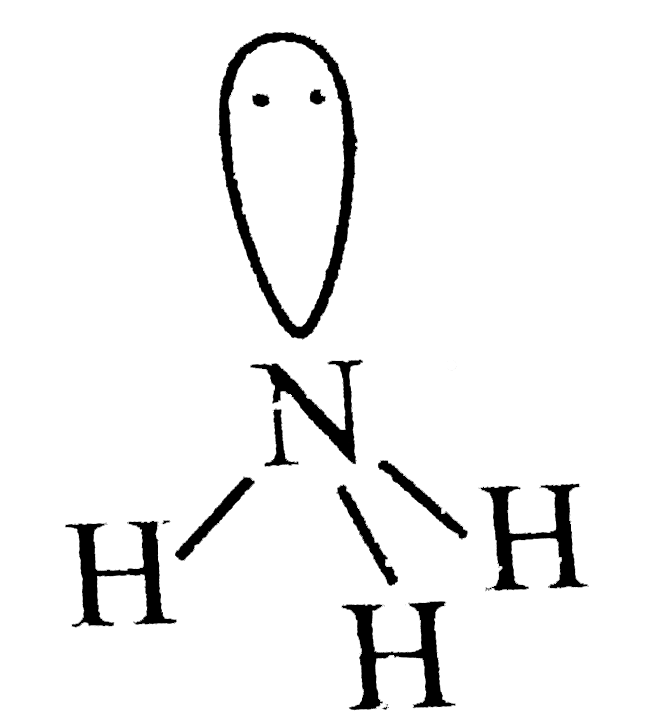Assertion : In NH3,Nis sp3 hybridised but bond angle is 107∘.
Reason : Shape of NH3 molecule is trigonal pyramidal.
If both assertion and reason are true and reason is the correct explanation of assertion.
If both assertion and reason are true but reason in not the correct explanation of assertion.
If assertion is true but reason is false.
If both assertion and reason are false.
The correct Answer is:B
NH3 molecule has three bond pairs and one lone pair of electrons.
Lone pair - bond pair repulsions are greater than bond pair - bond pair repulsions and hence result in deviation from ideal tetrahedral angle 109.5∘.

Topper's Solved these Questions
- CHEMICAL BONDING & MOLECULAR STRUCTUREBOOK - NCERT FINGERTIPSCHAPTER - CHEMICAL BONDING & MOLECULAR STRUCTUREEXERCISE - NCERT Exemplar
15 Videos
- CLASSIFICATION OF ELEMENTS AND PERIODICITY BOOK - NCERT FINGERTIPSCHAPTER - CLASSIFICATION OF ELEMENTS AND PERIODICITY EXERCISE - Assertion And Reason
15 Videos
Similar Questions
Knowledge Check
Bond angle in NH3 molecule is
A109∘28∘B107∘18∘C104∘9∘D90∘The section contains Assertion and Reason type questions, Each question has 4 choices (1), (2),(3) and (4), out of which only one is correct.
Assertion (A) The geometry of NH3 molecule is trigonal pyramidal with bond angle 107∘.
Reason (R ) In NH3 molecule the shape would have been tetrahedral but one lone pair is present and due to the repulsions between lp-bp.(which is more than bp-bp repulsion) the angle between bond pairs is reduced to 107∘ from 109.5∘.ABoth Assertion and Reason are correct and Reason is the correct explanation of the AssertionBBoth Assertion and Reason are correct but Reason is not the correct explanation of AssertionCAssertion is correct but Reason is incorrectDBoth Assertion and Reason are incorrectThe bond angle in H2O molecule is less than that of NH3 molecule because__________.
Athe hybridisation of H2O and NH3 is differentBthe atomic radii of N and O are differentCthere is one lone pair of electorns on O and two lone pair of electrons on NDthere are two lone pairs of electrons on O and one lone pair of electrons of N
Why is bond angle in NH+4 ion higher than in NH3 ?
View SolutionAssertion (A): Though the central atom of both NH3 and H2O molecules are sp3 hybridised, yet H-N-H bond angle is greater thant that of H-O-H.
Reason(R): This is because nitrogen atom has one lone pair and oxygen atom has two lone pairs.
View SolutionAssertion : Each carbon in ethylene molecule is sp2 hybridised.
Reason : The H-C-H bond angle in ethylene molecule is 120∘.
View SolutionA molecule is formed by sp3d2 hybridisation. Bond angle in it is :
View SolutionThe nature of hybridisation in the NH3 molecule is
View Solution
